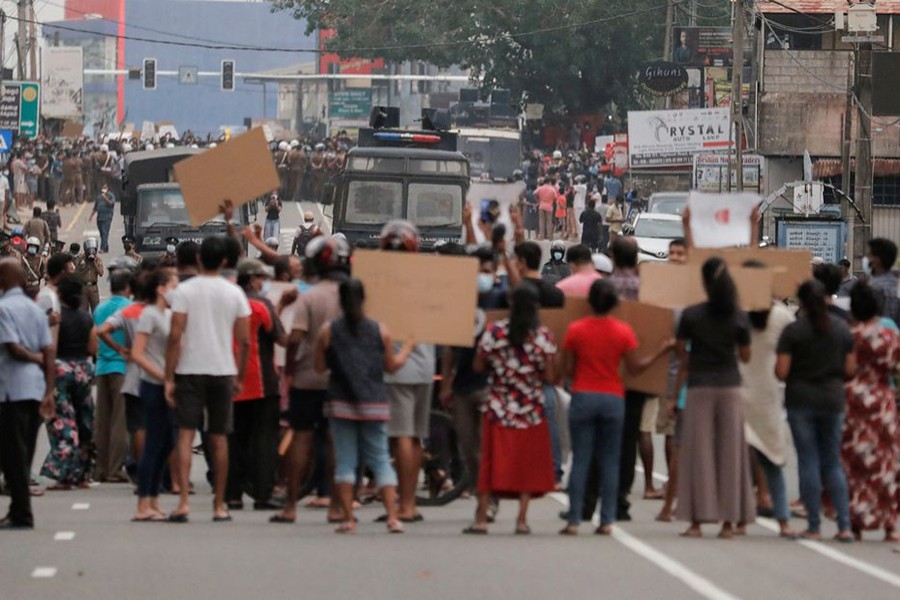The political situation in Sri Lanka is fast heating up over the violent public protests against acute scarcity of fuel, power, food and medicine. Some infuriated demonstrators burnt vehicles near the private residence of President Gotabaya Rajapaksa. After police action, they even hurled stones at the President's house. In response, the Lankan President declared a state of emergency on Friday, April 01. Next day, on Saturday, the Sri Lankan government imposed a 36-hour curfew in a bid to stem further rise in street protests. Under the state of emergency, the military has been given discretionary power to arrest anyone without warrant if suspected to be a troublemaker. The purported aim of the emergency, as President Rajapaksa said, is to serve the interest of public, ensure their security, maintain law and order and continue supplying the community with its basic needs. Earlier, in the official communiqué, the street violence was said to be the work of the 'extremists'. However, later, the minister for community police changed the phraseology terming the violent protesters 'terrorists'. Clearly, the Sri Lankan government's stance on street protests is going to be rather harsh. But how can the government of President Mahinda Rajapaksa quell a disgruntled public having its back to the wall for long by sheer force? The street protests as reported were not politically motivated, but spontaneous, as the people were venting their anger over the acute shortage, even unavailability, of the basic means of their sustenance including food, fuel and medicine.
But how could such misfortune befall this South Asian nation, which was once a thriving economy, topping the list of 31 countries to visit, according to the New York Times of 2010 and classified as a frontier market in 2018 as per S&P Dow Jones indices? True, there has been the impact of more than a quarter- century-long civil war between 1983 and 2009 and the recent battering of its economy, especially, the tourism sector by the Covid-19. The civil war apart, the last two years' pandemic has affected the entire global economy. Meanwhile, most least developed and developing economies, despite difficulties, have been gradually recovering from the slump. But the story of Sri Lankan economy appears to be different. The present government of President Mahinda Rajapaksa came to power in 2019 promising economic growth. After assuming power, he drastically reduced the country's revenue earning by cutting taxes including the Value Added Tax (VAT) as promised during the election. The tourism sector that contributes over 12 per cent to the economy suffered during the pandemic. The agriculture, on the other hand, which contributes 7.4 per cent to the country's GDP is also in a mess. This is due to the President's policy of banning import of fertilisers in a bid to introduce full-scale organic farming in the country. Another objective of the import ban on fertiliser, however, was to save foreign currency! But the policy proved disastrous for the country's farmers and it adversely affected food production. Though the ban was soon withdrawn amid protests from the farmers, the damage has been done. The country's food-related inflation in March was 30.1 per cent, according to the Colombo Consumer Price Index. Now, the foreign exchange reserve has declined to US$2.3 billion (in February), which is hardly worth a month's import bill. So, to bail out the economy, what the country needs is massive foreign aid. Though unwilling before, President Rajapaksa has now decided to approach the International Monetary Fund (IMF) for help.
The situation is desperate. The Sri Lankan people cannot wait. Hence is their violent outburst on the street. As such, it is definitely not a law and order issue.


